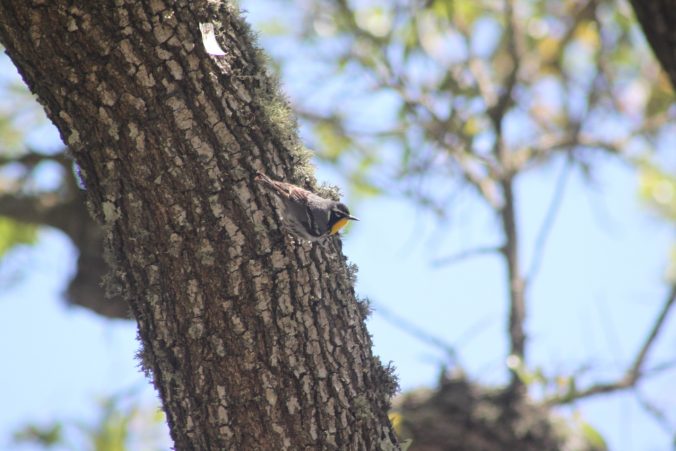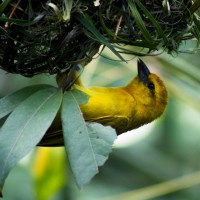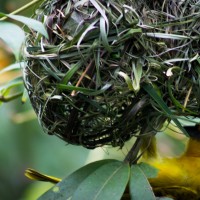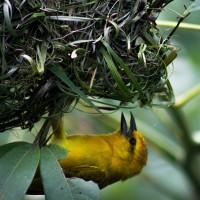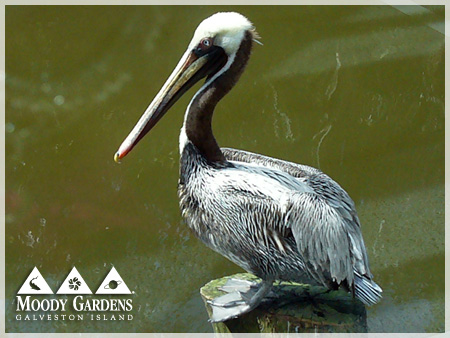By: Animal Husbandry Manager Greg Whittaker
As we hit the halfway point for April, I finally caught up on entering eBird lists and tallying the species I’ve encountered here at Moody Gardens. It feels a bit like my 2018 experience as I bird my way through my day. Binoculars and camera as permanent accessories while I deliver paperwork across property, or pick up deliveries from the warehouse. With all the typical spring migration activities cancelled and very little bird-nerd camaraderie happening, my time outdoors is my link to normal. I feel so very fortunate to be going to and from work in such a natural wonderland that my daily commute doubles as an enjoyable leisure activity.
Through the first 7 days of April, I encountered 109 species of birds. Through the second week, I’ve added 39 more for a whopping 148 species so far this month. There’s a reason Galveston County rates in the top 3 in the nation for birding in April. As I write this, I’m missing the nervous buzz that accompanies our annual Featherfest preparations. Meeting fellow birders as we check in at headquarters. Scouting eBird lists for upcoming trip locations to get the most up-to-date information for our guests. There’s still quite a buzz in the air for those of us fortunate enough to get out and bird. The spring migration is certainly still happening and in fact, the persistent north winds over the past few days have led to a great fall-out with loads of colorful passerines scouring our vegetated woodlots for the snacks they offer. I chose the image above for this blog as it’s the namesake bird for Houston Audubon Society – the Yellow-throated Warbler that adorns the logo. This fella dropped in early this afternoon after a tough trans-Gulf journey. If you’ve got the time, get outside and spend a few minutes looking through those hedges and trees. The birds are here!
In addition to the shear excitement of ticking off new species every single day, I had some surprising encounters over the past 2 weeks. On April 1st as I was leaving property, I stopped to take a look in one of the Oak groves favored by spring migrants. I did catch a female Cooper’s Hawk fly in with a fresh catch, a Rock Dove. As she tore into it, she was oblivious to me stalking in closer to snap a few pictures. Just as I got in a good location and started clicking away, the male flew in and mated her, answering the questions I’d had on whether this was a pair or not. She didn’t even stop eating and certainly didn’t share with him. This also answered the questions on why the Yellow-crowned Night-Herons and Green Herons weren’t busy nesting in this grove as they have in years’ past. As of 3 days ago, she’s sitting on a nest and he’s still showing up to bring her food, and the grove’s not particularly birdy otherwise.
Through the first couple days of the month I encountered a Red-shouldered Hawk eating a Blue-winged Teal, and a Louisiana Waterthrush catching and eating a fairly good sized Sheepshead Minnow. On the 6th, I found a freshly dispatched Barn Swallow mounted on the barbed wire fence adjacent to a Loggerhead Shrike’s perch. 3 days later I found a freshly killed Sora in a similar state. How does a Shrike kill a Sora and carry it up to a barbed wire fence 6 feet off the ground. All I can say to Mrs. Shrike is that’s SOME provider – she must be impressed. Just yesterday, that same Red-shouldered Hawk with a taste for blue, offered me a great photo-op as it unceremoniously dismantled one of those gorgeous Indigo Buntings that are flitting about property by the dozens.
Easter Sunday was the night for nighthawks as a late afternoon birding excursion offered views of over 2 dozen Common Nighthawks streaming in off the Gulf. We were fortunate enough to tease out 2 that were smaller, flying more erratically, closer to the hedges, with white flashes at their wing-tips. The lesser seen Lesser-Nighthawk.
Monday after Easter was Sparrow day. The strong northwest winds delivered a plethora of the little brown jobbers with enough interest in foraging that they allowed adequate viewing and photo-ops to decipher 9 species, plus the ubiquitous House Sparrow. The usual suspects including Savannah, Swamp and Lincoln were augmented with Chipping, Clay-colored, Song, Vesper, White-throated and the striking Lark Sparrow.
The past few days have been blessed with the blustery weather that’s unkind to the migrating birds, but kind to the birders. Warblers, Vireos, Buntings, Orioles, Tanagers, Grosbeaks, Thrushes and the Sparrows mentioned above are here in good numbers. The 3rd week of April is statistically the best week for migratory bird watching here in Galveston County. If you can get outside and spend a few hours appreciating Nature’s bounty in an appropriate socially distanced manner, please do. It will do your soul some good.
Stay safe peeps.
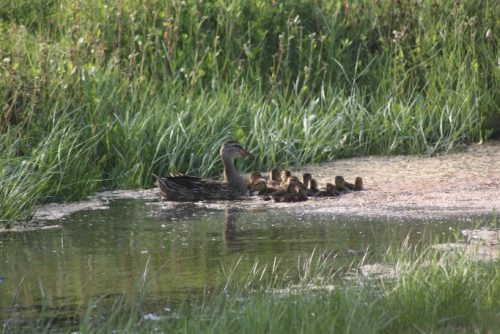
Greg Whittaker is Moody Gardens animal husbandry manager and, as a birding enthusiast, frequently leads free Birding 101 and Birding 201 tours around the island.

